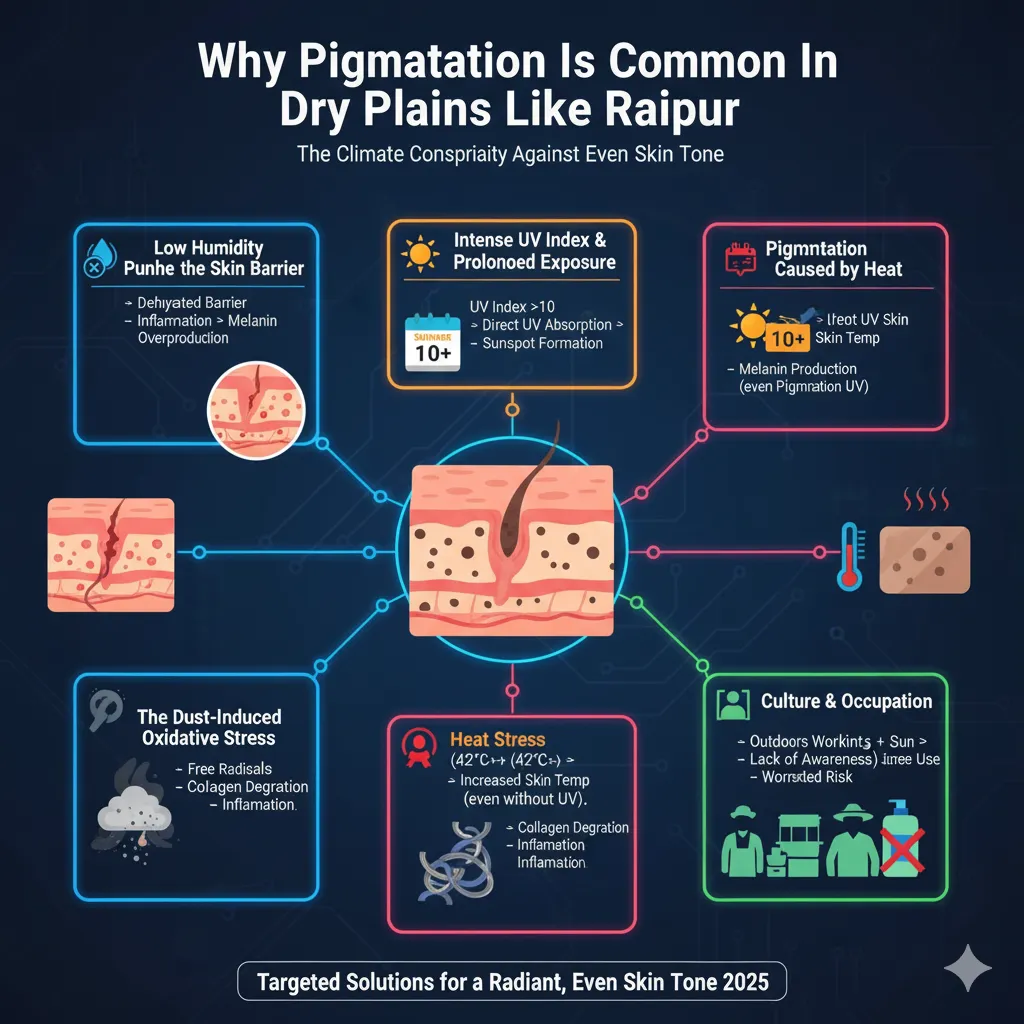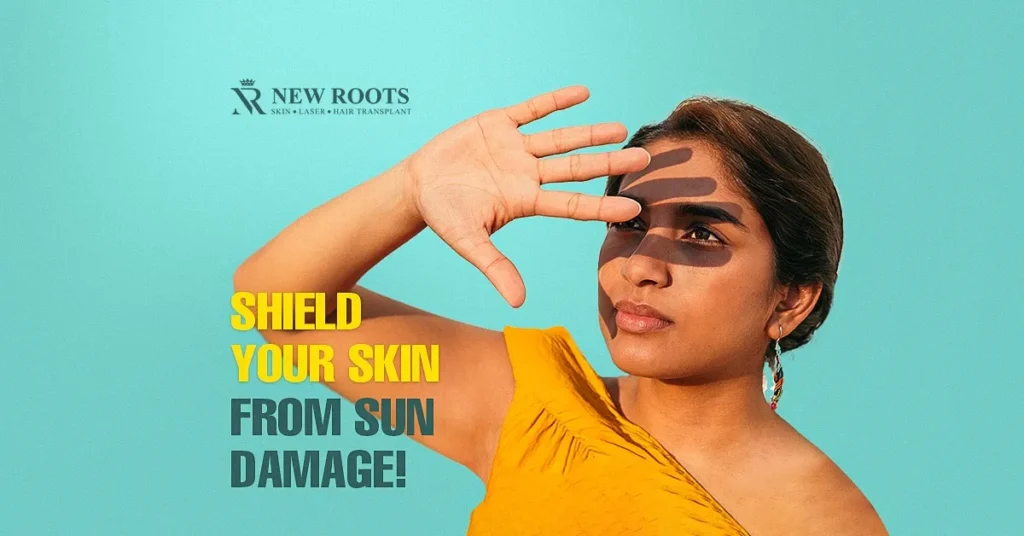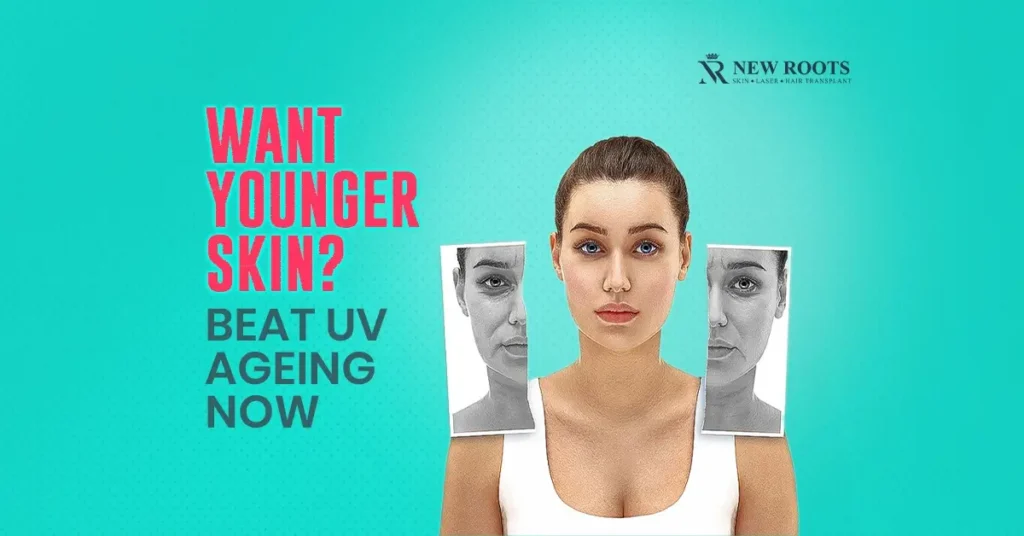Table of Contents
The climatic conditions become quite oppressive in Central India, districts like Raipur having had their share, with endless sun to dry air, with temperatures soaring way up.
Dry heat may at first seem manageable, compared to, say, humid coasts or freezing hills, but it goes undetected as the skin slowly weakens, made worse especially from sun spots and pigmentation.
Such skin concerns have been increasingly common among the denizens of Raipur and adjoining areas; prolonged sun exposure is only a part of the problem: it is the cumulative effect of dry enforcers acting on our skin.
This blog forever dives into how pigmentation problems are fuelled by the Raipur climate, what sun spots are, and why a dry, sunny place leaves long-lasting markings on your skin.
Understanding Sun Spots and Pigmentation
Before we understand how the climate of Raipur affects your skin, let us first understand these basic terms.
Sun spots, popularly known as solar lentigines, age spots, or liver spots, are flat blemishes of brown, black, and sometimes even shades of grey that appear on sun-exposed areas like the face, hands, shoulders, and arms.
These tend to be produced by highly reactive pigment cells due to exposure to ultraviolet (UV) radiation. In other words, with repeated exposure to the sun, the melanin, which is the natural pigment of the skin, tends to either clump together or be produced in large quantities in local areas.
Pigmentation, in general, is the term used for any skin discoloration produced by an increase in the synthesis of melanin. On the brighter side, sunspots are one form of pigmentation; the other forms include melasma, post-inflammatory hyperpigmentation (PIH), freckles, and uneven skin tone.
Now that you know the basics, let’s see how Raipur’s dry heat gives them an extra push.
Raipur’s Climate and Its Impact on Skin
Raipur, the capital of Chhattisgarh, lies in the heart of the interior of dry plains. The reasons for these climatic conditions being tough for your skin are as follows:
- High average summer temperatures (35 °C–45°C)
- Low humidity, especially from March to June
- Extreme sun exposure of about 9–10 hours with UV intensity
- Scanty cloud cover
- Pollution and dust particles from the urban atmosphere worsen sun damage
While in some parts of the country, the humidity tends to add to the distress of the skin types, this region of dry heat has its own aggravating factors for the skin. The sun rays are higher in intensity and higher in time duration here and therefore offer less duration for tanning and more photo-aging and pigmentation problems.
How Raipur’s Climate Triggers Skin Pigmentation
Raipur’s climate isn’t just hot, it’s a complex mix of intense UV radiation, dry heat, and low humidity that together accelerate skin pigmentation.
From sun spots to melasma, the skin responds to prolonged exposure by overproducing melanin, especially when the skin barrier is already compromised by dehydration and environmental stress.
Understanding these climate-specific triggers is key to managing and preventing pigmentation in this dry zone.
| Climate Factor | Skin Impact | Resulting Pigmentation |
| High UV Index (9–11) | Increases melanin activity | Sun spots, melasma |
| Dry Heat (35°C–45°C) | Dehydrates skin; weakens the barrier | Uneven skin tone, PIH |
| Low Humidity | Disrupts natural hydration | Dullness, dry patches |
| Air Pollution & Dust | Oxidative stress from free radicals | Hyperpigmentation |
| Prolonged Sun Exposure | Cumulative UV damage | Tanning, age spots |
Why Pigmentation Is Common in Dry Plains
Raipur and neighboring areas of Central India belong to one large dry plain ecosystem, where the conditions of nature conspire against pigmentation disorders. Excessive sunlight, dry air, and lifestyles altogether lead to the phenomenon of skin damage, which appears to be sun spots, melasma, and uneven pigmentation.
👉 1. Low Humidity Punishes the Skin Barrier
In dry climates, the skin rapidly loses moisture to the environment. Dehydration of the barrier sets in, making it prone to damage caused by external stressors like UV rays, pollutants, and microbes. When the barrier is weak, inflammation can be triggered easily, which in turn makes melanocytes (pigment-producing cells) go into overdrive and produce too much melanin.
👉 2. Intense UV Index and Prolonged Exposure
Throughout the hottest months of summer, it is common for Raipur to experience a UV Index of above 10. Unlike an atmosphere filled with moisture, a dry atmosphere does not scatter the UV rays. This allows them to be absorbed directly and in-depth, thereby hastening sunspot formation and long-range pigmentations.
👉 3. Pigmentation Caused by Heat
Pigmentation is not only a result of sunlight but also of heat stress. Raipur’s hot, dry climates increase skin temperature, leading to melanin production even without any UV exposure. This becomes particularly problematic for people with a darker skin tone (Fitzpatrick types III to V).
👉 4. The Dust-Induced Oxidative Stress
Dust and pollutant particles are the main features of dry environments. The sun casts its rays, generating free radicals, which bring about collagen degradation and inflammation.
👉 5. Culture and Occupation
The major chunk of Raipurians is are outdoors working population—farmers, street vendors, and daily wage laborers. Lack of awareness and minimal sunscreen use further worsen pigmentation risks.

Types of Pigmentation Common in Raipur
1. Sun Spots (Solar Lentigines)
These are flat, round, or oval spots that appear in shades of brown, black, or grey, primarily on sun-exposed areas like the face, hands, shoulders, and arms. While traditionally seen in individuals over 30, they are now increasingly common in younger adults in Raipur due to chronic exposure to high UV levels.
The dry heat weakens the skin’s natural defenses, allowing UV radiation to trigger excess melanin production, resulting in persistent sun spots that don’t fade easily.
2. Melasma
Melasma appears as symmetrical patches of brown or grey pigmentation, often affecting the cheeks, nose bridge, forehead, and upper lip. It is hormonally influenced (e.g., during pregnancy or due to oral contraceptives) but is also highly photosensitive.
In Raipur’s climate, intense heat and sunlight act as catalysts, worsening existing melasma or triggering new patches. Heat-induced inflammation can stimulate pigment-producing cells, making the condition difficult to manage without sun and heat protection.
3. Post-Inflammatory Hyperpigmentation (PIH)
PIH is a common type of pigmentation that follows skin trauma like acne breakouts, insect bites, cuts, or burns. It is more prevalent in individuals with medium to dark skin tones (Fitzpatrick types III to V).
In Raipur, the combination of dry heat and impaired skin healing leads to prolonged inflammation, slowing down the fading process and causing marks to linger for months if not managed properly.
4. Tanning and Uneven Skin Tone
Even a short outdoor stroll under Raipur’s harsh sun can cause quick tanning and visible darkening, especially on the forehead, nose, and arms. The low humidity and dry air reduce the skin’s moisture retention, disrupting its natural exfoliation process. This leads to uneven buildup of melanin and a patchy, uneven tone that worsens with regular exposure and minimal protection.
The Preceding Signs to Keep in Check
Pigmentation doesn’t appear overnight; it builds up gradually. In Raipur’s dry, sun-intense climate, early signs often go unnoticed until they become stubborn. Identifying these subtle changes in your skin early can help prevent deeper, long-term pigmentation damage.
| Symptom | What It Indicates |
| Uneven skin tone | Early melanin imbalance |
| Brown or grey patches on the cheeks | Possible melasma or sun-induced spots |
| Persistent tan | Chronic UV exposure |
| Flat brown spots on arms/nose | Sun spots (solar lentigines) |
| Dullness and dry texture | Dehydrated skin |
Prevention Tips Tailored for Dry, Sunny Regions
1. Sunscreen—A Daily Affair
Use SPF 50+, PA++++ broad-spectrum sunscreen. Reapply every 3–4 hours. Opt for gel or matte formulas suited to dry heat.
2. Antioxidant Serums Are a Must
Vitamin C, niacinamide, ferulic acid, or green tea help reduce oxidative damage and even out skin tone.
3. Barrier Repair Is Key
Use moisturizers with ceramides, hyaluronic acid, and panthenol. Avoid alcohol-based toners and harsh exfoliants.
4. Hydration From Within
Drink 2.5–3 liters of water. Eat hydrating fruits like cucumber, watermelon, and citrus.
5. Sun-Protective Clothing
Wear hats, UV sunglasses, and full-sleeved cotton clothes. Umbrellas with UV lining offer extra protection.
Best Skincare Ingredients for Dry, Sun-Exposed Skin
To combat the harsh effects of dry heat and intense sun in Raipur, your skincare must rely on ingredients that hydrate, protect, and repair. The right actives can strengthen your skin barrier, fade pigmentation, and prevent further damage. Below are some of the most effective ingredients to look for.
| Concern | Recommended Ingredients | Function |
| Sun Protection | Zinc oxide, titanium dioxide, avobenzone | Blocks UVA/UVB rays |
| Antioxidant Defense | Vitamin C, ferulic acid, green tea | Fights free radicals, brightens skin |
| Hydration | Hyaluronic acid, glycerin, squalane | Restores moisture |
| Barrier Repair | Ceramides, panthenol, niacinamide | Strengthens skin barrier |
| Pigmentation Treatment | Kojic acid, arbutin, licorice extract | Lightens dark spots |
Existing Pigmentation Treatments
At-Home Remedies
Natural ingredients like aloe vera, licorice extract, and turmeric help calm and brighten skin. Use vitamin C, niacinamide, and arbutin serums regularly with sunscreen.
Dermatological Treatments
Chemical Peels
Microdermabrasion
Laser Therapy (Q-switch Nd: YAG)
Prescription creams with hydroquinone, tretinoin, and kojic acid
Local Context: Why Raipur Needs a Unique Skincare Approach
Dry plains, intense sun, and airborne dust make Raipur’s climate uniquely harsh on the skin. Unlike coastal or temperate regions, Raipurites face year-round trans-epidermal water loss (TEWL), sun-induced pigmentation, and oxidative stress from environmental pollutants. Yet, skincare is often treated as optional, particularly among men, older adults, and those living in semi-urban or rural areas.
Many still associate moisturizers with winter only, unaware that dry heat silently strips hydration even in peak summer. Sunscreens are often overlooked, leading to widespread tanning, sun spots, and melasma.
This lack of awareness, combined with occupational exposure (farmers, laborers, street vendors), means early signs of pigmentation often go untreated and worsen over time.
Raipur’s skincare strategy cannot be one-size-fits-all. It requires a routine tailored to the climate: daily hydration, barrier repair, sun defense, and pollution protection, year-round. Treating skincare as a serious necessity, rather than a luxury, is the first step toward healthier, more resilient skin in this demanding environment.
Final Thoughts
If you are living in Raipur or any other dry, sun-baked zone in Central India, your skin endures constant weathering, whether you notice it or not. The dry heat, high UV exposure, and environmental pollutants chip away at your skin’s moisture, structure, and even its ability to repair itself.
Sun spots and pigmentation are not just surface-level flaws; they’re visible signals of deeper, cumulative skin damage caused by chronic exposure to harsh climatic elements.
But the good news is: this damage is not irreversible. By understanding the unique triggers like trans-epidermal water loss (TEWL), oxidative stress, and barrier disruption, you can design a skincare routine that aligns with Raipur’s dry climate. Hydration, sun protection, antioxidant care, and timely exfoliation form the foundation of this healing process.
If you’re unsure where to start, New Roots Skin Laser and Hair Transplant Clinic in Raipur offers climate-specific treatments tailored to local skin concerns. Whether it’s managing stubborn pigmentation, repairing a compromised barrier, or simply reviving dull, tired skin, their dermatology-backed solutions are grounded in both science and local insight.
The dry heat may be an unavoidable part of life in Raipur, but pigmentation doesn’t have to be. With the right approach and expert support, your skin can be protected, renewed, and glowing all year round.
FAQs
They may fade slightly with skincare, but typically require treatments like peels, lasers, or creams for visible results.
Dry heat weakens the barrier and allows deeper UV penetration, making pigmentation more intense and persistent.
No. You need antioxidants, barrier support, hydration, and physical protection in addition to sunscreen.
People with medium to dark skin tones, outdoor workers, women with hormonal changes, and those with a family history of pigmentation.
Use broad-spectrum sunscreen, vitamin C, niacinamide, and exfoliants like lactic acid. But for moderate to severe pigmentation, a dermatologist’s care is ideal.





